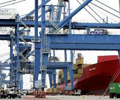Gauging the slowdown in China

It has now been well established that the US Fed’s primary focus is combating inflation. However, this is expected to come at a cost of a slower economic growth. Policy tightening by developed markets’ central banks continue to take the centre stage. Alongside, the hurdle is in Chinese economy which continues suffering. This is evident in its plummeting real estate prices, power crunch due to abnormally hot weather with lack of rainfall and frequent lockdowns as part of its Zero COVID strategy.
IDFC Mutual Fund’s analysis shows the Chinese manufacturing PMI has moderated since early 2021, after the goods demand related pickup in H2 2020, but it likely does not reflect the extent of growth slowdown. China may miss the 2022 growth target of 5.5 percent by a fair margin. Also, the government bond issuance has picked up in the last one year, but overall credit (aggregate financing) is still sluggish as growth in loans, the main component, continues to moderate. The real estate investment growth has fallen due to property sector woes, which is a drag on Chinese growth. This has led to the drop in property prices impacting household wealth. Hence, consumers are severely impacted due to wealth erosion and dim income growth prospects.
The retail sales, post the onset of the pandemic in China, has been on the weaker side and is still below levels implied by the pre-pandemic path. Consumer loan growth has also slowed by over 9 ppts over the last 18 months. Hence, the overall consumer confidence has plunged. Although headline CPI inflation has been inching up, core-CPI has been benign at under 1 percent year-on-year.
Given that global demand and trade is likely to slow, China’s exports will most likely moderate in addition to the already slow growth driver of private consumption. Given monetary policy in the rest of the world is getting tighter, it is difficult to see China easing in a big way. Fiscal policy is also partly constrained due to the property sector slowdown as a good part of revenue, particularly for the local governments, are from land sales to property developers. Sreejith Balasubramanian, Economist at IDFC Mutual Fund, says targeted fiscal measures for the property sector or households could still be the key, although the Zero Covid Strategy that China has persisted with, poses uncertainty.
The bigger question, however, is how a weakness in the Chinese economy will push down the global economy growth. If China undergoes a worse-than-anticipated slowdown, it will be a no brainer to expect major global spill-overs. IMF expects the global GDP growth to slow from 6.1 percent in CY2021 to 3.2 percent in CY2022. China’s GDP is expected to nosedive to 3.3 percent in CY2022 from 8.1 percent in CY2021. With the ongoing protectionism on the rise and geopolitical tensions getting more heated, businesses today have to be even more prepared to live in a new era of uncertainty.
Source: CNBCTV18

 Hellenic Shipping News Worldwide Hellenic Shipping News Worldwide, Online Daily Newspaper on Hellenic and International Shipping
Hellenic Shipping News Worldwide Hellenic Shipping News Worldwide, Online Daily Newspaper on Hellenic and International Shipping





















 PG-Software
PG-Software